Struggling to pick the best faucet aerator for your home can be an annoying experience. If anyone knows that, I’m that person. That’s why I decided to share the different types of faucet aerators when I was looking for the typical faucet aerator for myself.
A faucet aerator is essential to save water by controlling water usage and consumption. Faucet aerators add air and conserve water without stopping the flow of water. In turn, you will be saving money on utility bills.
The main category for faucet aerators is the male and female category based on the threading pattern of the faucet aerator. However, there are different categories of aerators based on flow rates and other factors.
It’s essential to know the different types of aerators to make a good choice of what you want. Let’s take a look at the different aerator types;
JUMP TO: Aerator Based on Threading | Based on Size | Based on Flow Rate | Based on Faucet Compatibility | How to Select the Right Faucet |
- Faucets aerators are mainly grouped into male and female options
- You can also group them based on their size and flow pattern.
- Your faucet aerator can affect how water flows from the faucet itself.
Based on Threading
Male and female aerators are the main types under this category. These aerators work similarly but depend on your faucet type and design.
Depending on its design, your faucet has threads on the inside or outside. You need to know the thread situation of your faucet before choosing the corresponding aerator.
Let’s take a look at both of them;
Male Threaded Aerator
The male aerator has its threads on the outside of the aerator. With its outer threading, a male aerator will only work with a female faucet with its threads inside.
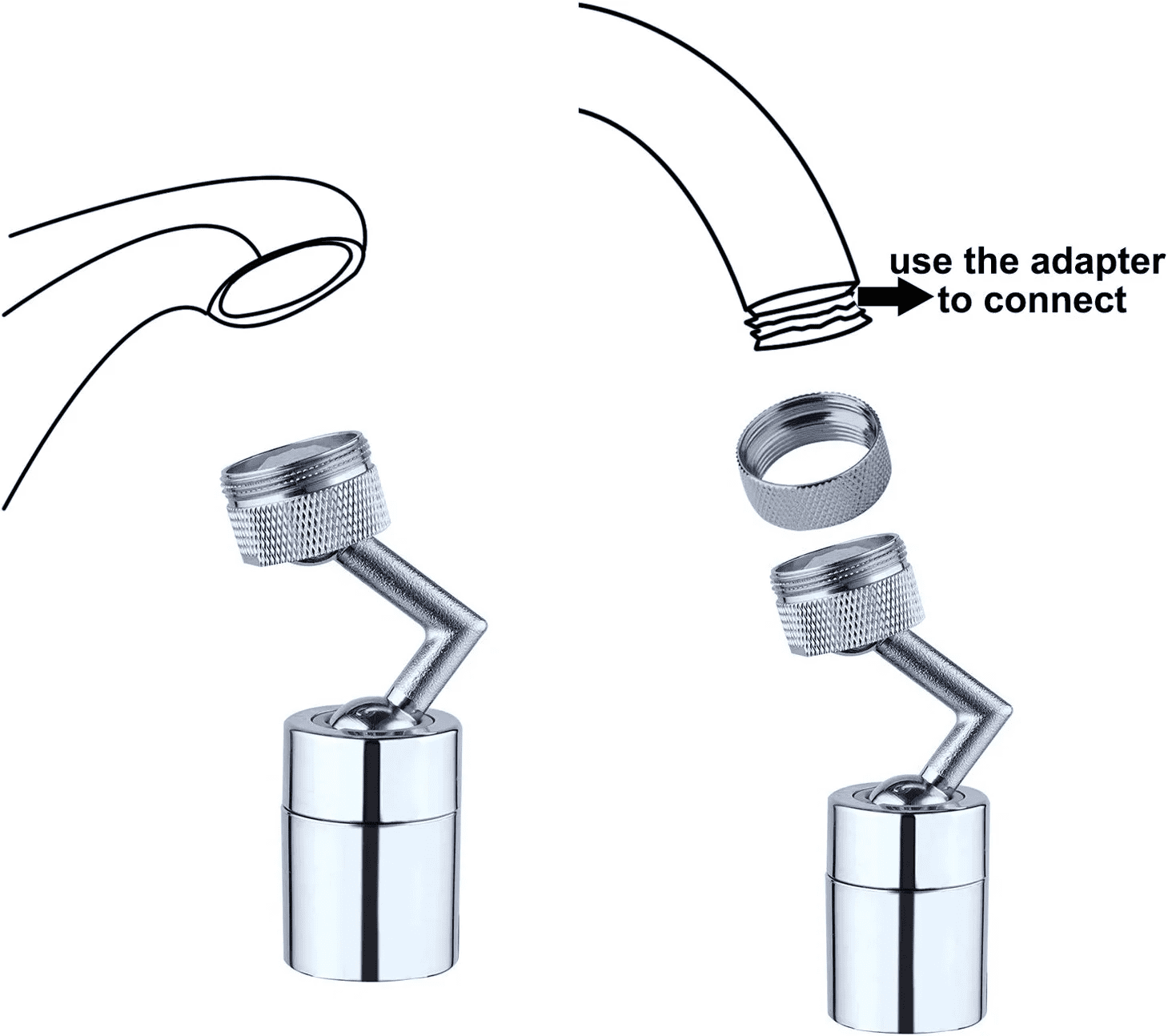
Source: Ubuy.com
Female Threaded Faucet Aerator
The female aerator is the exact opposite of the male aerator. A female aerator has inner threading and will only work if you have a male faucet. That means your faucet will have threads on the outside.
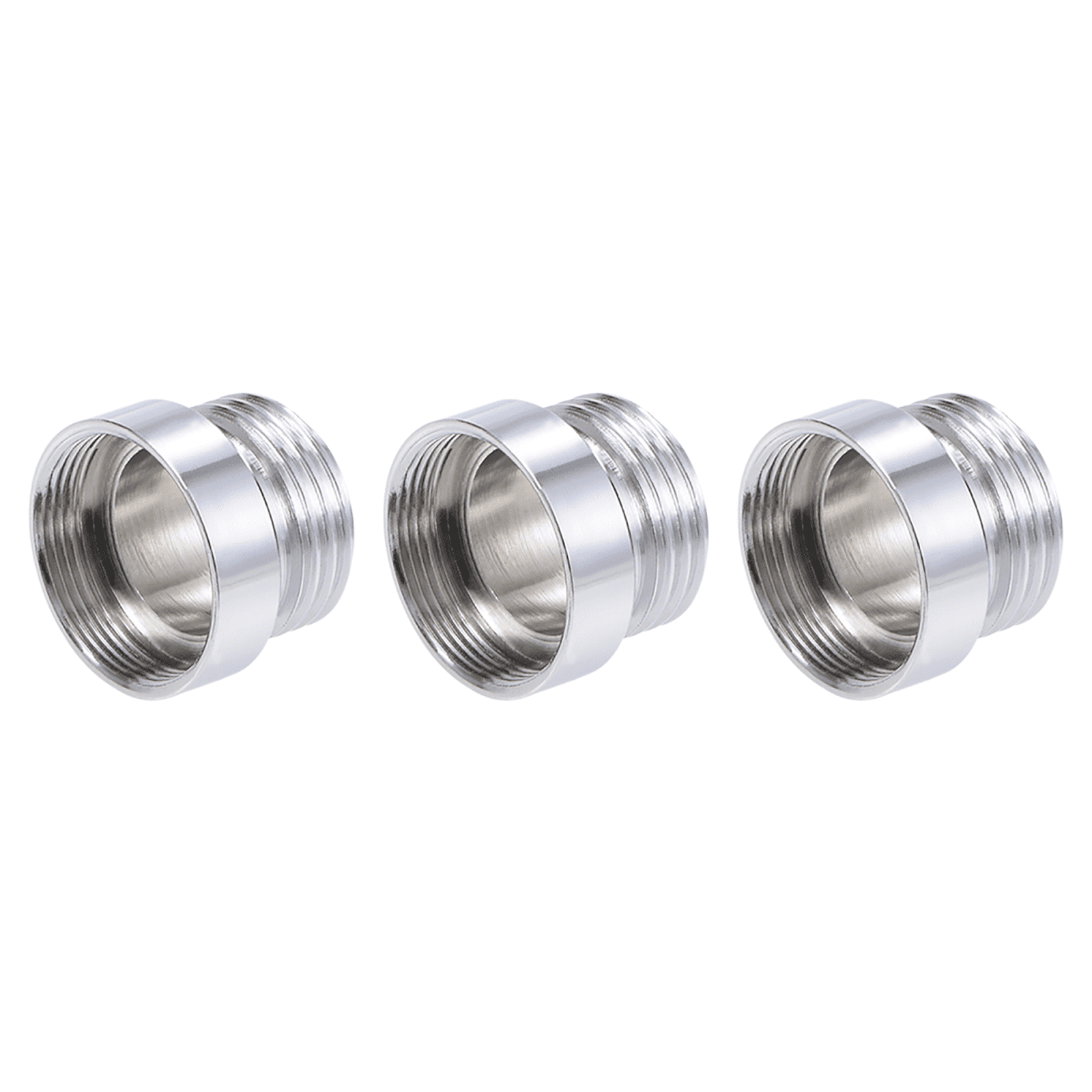
Source: innerwestphysionsw.com.au
Dual Aerator
Dual aerators have threads on both the inside and outside. As such, they work perfectly with both male and female faucets.
This type of faucet aerator is best when you don’t know the kind of kitchen faucet you’re dealing with. If you have a male faucet, the threads inside the dual aerator will suffice for compatibility.
However, this dual feature doesn’t make faucet aerators universal. Most faucet aerators depend primarily on the faucet you’re working on. So it may have threads inside and outside, but the dual aerator won’t be ideal for all.
Based on Size
Another category used to classify faucet aerators is the aerator size. Not all aerators can fit any faucet spout since they have different sizes.
The faucet’s size affects how your aerator adds air to control water flow. Factors that affect the size of a faucet aerator include;
- The faucet spout and outer diameter
- The required flow rates needed in the facility
- The perceived water pressure needed
There are five sizes of aerators used to conserve water, including:
Junior Size Faucet Aerator
The junior-size aerator has both female and male types. The sizes of the male and female in inches are 13/16 and 3/4, respectively.
These kitchen faucet aerators aren’t the most common, but they fit some faucets. You need to know the size of your faucet spout to tell whether the male or female does it.
If you have an existing aerator in the faucet, getting the exact size is more accessible. All you need to do is to remove the faucet and measure it to the length of a nickel coin.
If the aerator size fits the exact size of the nickel, it’s a junior-size aerator.
You can also measure the faucet size with the coins to determine your desired aerator. If the faucet is the size of a dime coin, you’ll need the junior-size aerator.
Regular Size Faucet Aerator
The regular-size aerator is the most common form of all faucet aerators. The male aerator’s outer diameter is 15/16 inches, while the female counterpart is 55/64 inches.
This size is the most common faucet aerator housing size because it fits most residential faucets.
Like the junior size, you can measure the size of your faucet or aerator to know the correct size. If the aerator size fits a quarter coin, it’s the regular size.
You can also measure the size of the faucet with a coin to be sure if it needs a regular-size aerator. If a nickel coin fits the spout of the kitchen faucet, a regular-sized aerator will work perfectly.
TIPS: The coin size and the aerator or faucets don’t have to be equal. If it’s approximately the same, it fits.
Tom Thumb Sized Faucet Aerator
The tom thumb-size aerator is possibly the most uncommon aerator option. It usually has a label describing the available size. The female tom thumb size aerator has a M16 inscription, while the male has the M18.
This aerator isn’t very common, but you can use a coin to measure it. All you need is to use a dime coin. If the aerator has the approximate size of the dime coin, it’s the tom thumb aerator.
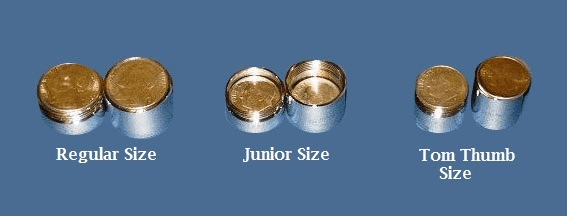
Source: conservationwarehouse.com
Based on Flow Rate and Type
Every aerator mixes air into the water to ensure optimum water usage. But mixing air in the water affects the water supply to save money by reducing flow rates.
This is the most tricky part: you must be careful when choosing your faucet aerator type.
If you choose the wrong faucet, you’ll have low flow in your water and a miniature shower pattern. You’ll take long periods to have a bowl filled up because of the water stream caused by the low-flow aerator. On the other hand, the aerator can generate a large water stream that will mess up the kitchen faucet area or bathroom sink. According to US water Management practices, an aerator should allow the use of water less than 2.2 gallons per minute.
It would be best if you got the correct aerator when choosing based on the flow. The options you have to include;
Also Read: Centerset Vs. Widespread Faucets
Laminar Stream
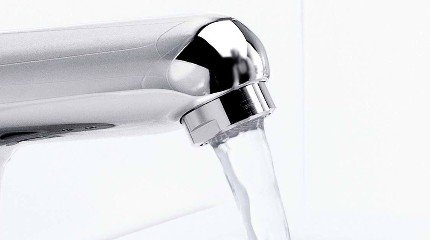
Source: stories.hansa.com
The Laminar stream aerators provide a nonaerated stream pattern when you install them. That means there’s no air in the water produced.
This type of aerator is perfect for healthcare facilities and other public spaces that need lots of water. It works with laminar spout-end devices.
You can also have a multiple laminar spray aerator installed in the faucet. This is an excellent solution to low flow, producing a miniature shower pattern that covers better and uses more water.
Spray Stream Aerators
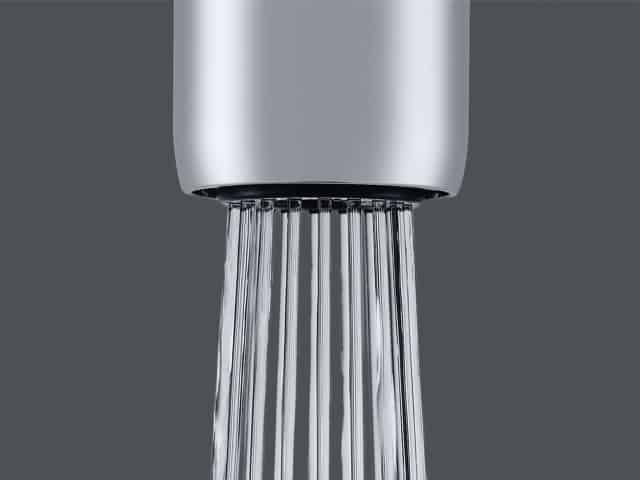
Source: neoperl.com
The spray water stream aerators are great for producing a non-splashing flow rate. The spray pattern of these aerators is small but enough. The design remains gentle and will ensure minimal splashing.
You’ll find these aerators in public toilets where a non-splashing stream is necessary.
Aerated Stream Aerators
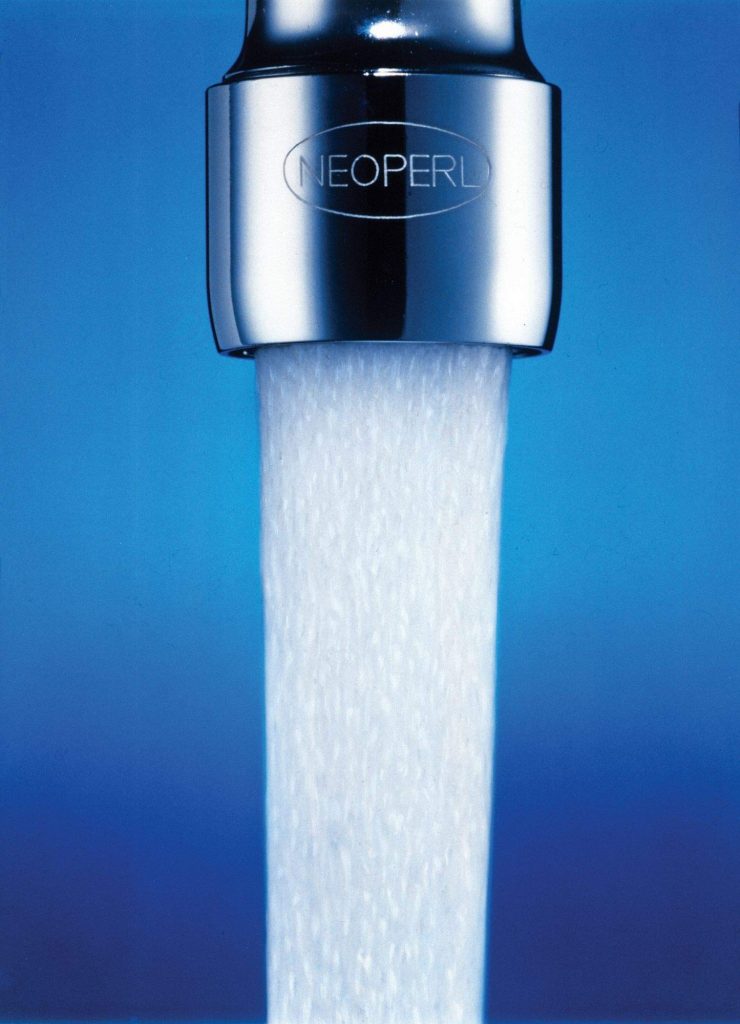
Source: neoperl.com
The aerated stream device adds air into the water before the water flows out. This produces a large whitewater stream with a low flow rate.
This type of aerator is the best for faucets in your home.
Rain Spray Stream Aerators
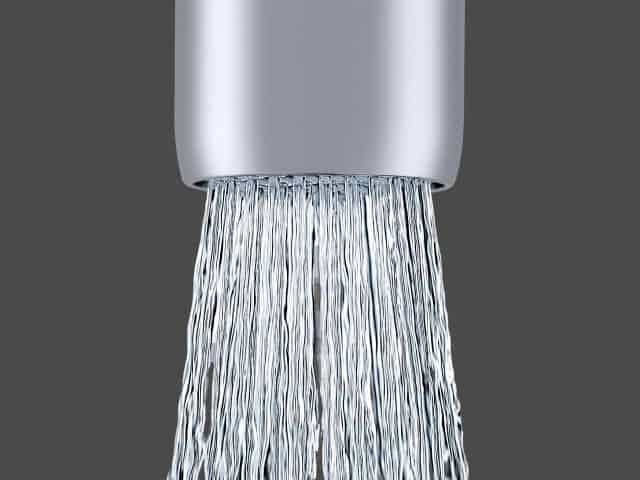
Source: neoperl.com
As the name implies, the rain spray aerators give you a rain-like pattern but gentler. This means you get a lot of water flow spread like a pattern. This makes you have enough water flow rate.
Mikado Stream Aerators
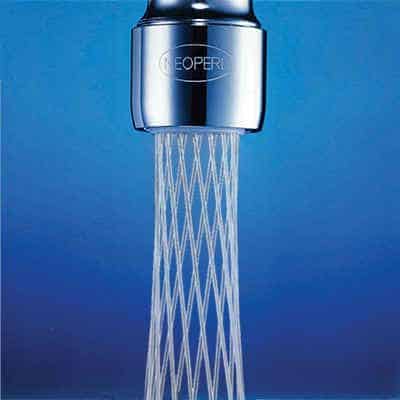
Source: neoperl.com
The mikado stream aerators are more aesthetic than functional. This is the best option if you want your water to flow in a designed manner. The water stream has a twisted stream that’s enjoyable and aesthetically pleasing.
Low Flow Aerator
The low-flow aerator works with a flow restrictor to reduce how water flows out of the faucet. This low flow doesn’t mean that water won’t come out well.
It means that water mixed with air is coming out, so the water feels heavier but is smaller.
Needle Spray Aerator
The needle spray aerator provides you with the lowest water stream needed. This is an excellent option if you have a faucet in a place that isn’t exactly necessary.
For instance, the sink is not always working in the bathroom sink. So, you can have a low flow in that place.
Needle spray aerators offer you as low as 0.5 gallons per minute.
Related Read: How to Identify Kitchen Faucet Brand
Based on Faucet Compatibility
It’s an uncommon practice, but faucet aerator categories also occur because of the faucet they can work with.
Some manufacturers make aerators that can align with specific types of faucets. Some examples are:
Stationary Aerator
This type is the most common one that works with almost any faucet, stationary or not. The aerator installation occurs at the end of the faucet spout and doesn’t move.
Depending on the flow pattern of the faucet, this faucet is the best for most people.
Swivel Aerator
The swivel aerator works mainly with the swivel faucet. It can work with some others, but not all the time.
You won’t have problems spraying the tightest part of your sinks with this aerator.
Diverter Aerator
The idea of an aerator is to save water and reduce water consumption. But in other cases, the aerator can be handy for diverting water.
You may think you don’t need water diversion, but in some cases, it’s necessary.
For instance, if you want to divert water from the kitchen sink to your faucet sprayer, this aerator type will help.
It works with a faucet diverter valve.
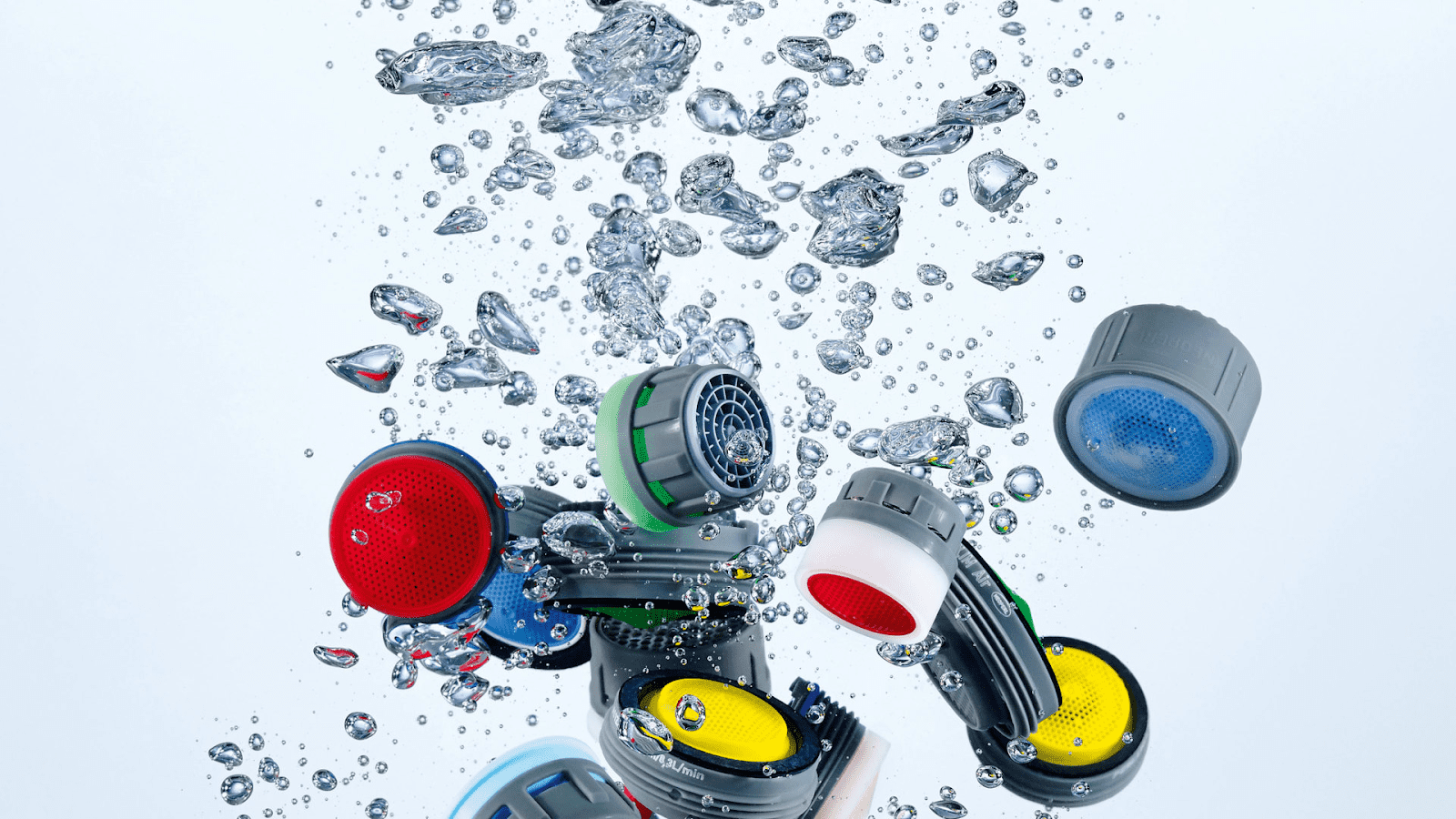
Source: neoperl.com
How to Pick The Right Faucet
While there are many faucet types, you’ll need to pick one that combines many things.
For instance, you may need a male faucet but must also consider your desired flow type. That will involve you measuring flow with a pressure gauge or other items.
If you’re trying to get a new aerator, some of the crystal clear factors to consider include the following:
- The type of faucet you have.
- The flow rate you need to have.
- The flow pattern you want.
Whether you’re trying to provide city water or you want personal drinking water, considering these factors is helpful.
Also Read: Pros and Cons of Wall-Mounted Faucets
Conclusion
Choosing faucets can be a daunting task, given the many types. However, it would be best if you had a functional faucet for your home, office, or public facility.
Usually, your plumbing expert should always make your faucet decisions for you or at least with you. Their experience and expertise will help you pick the perfect faucet aerator for you.
Making a faucet aerator mistake can be frustrating, and you won’t like its outcome.

![How to Increase Water Pressure In My Kitchen Sink? [Methods Explained] How to Increase Water Pressure In My Kitchen Sink? [Methods Explained]](https://houseadorable.com/wp-content/uploads/2022/12/water2.jpg)
![How to Identify Kitchen Faucet Brand [6 Techniques To Know] How to Identify Kitchen Faucet Brand [6 Techniques To Know]](https://houseadorable.com/wp-content/uploads/2023/02/GettyImages-1177440335-0210e69740fd4045ab6a88f1588e9f4f-1-250x250.jpg)
![16 Types of Kitchen Faucets Explained [With Pros + Cons] 16 Types of Kitchen Faucets Explained [With Pros + Cons]](https://houseadorable.com/wp-content/uploads/2023/02/Roca_griferia_cocina_mencia_negro_DEF_900x505_acf_cropped-1@2x-250x250.jpg)
![27 Types of Cutting Boards Explained [Buying Guide Included] 27 Types of Cutting Boards Explained [Buying Guide Included]](https://houseadorable.com/wp-content/uploads/2022/12/cutting-board.jpg)
![Wood Cutting Board Vs. Plastic Board [Which is Safer?] Wood Cutting Board Vs. Plastic Board [Which is Safer?]](https://houseadorable.com/wp-content/uploads/2023/01/wood-board.jpg)
![20 Types of Dormers and Their Architecture [Explained] 20 Types of Dormers and Their Architecture [Explained]](https://houseadorable.com/wp-content/uploads/2022/05/Dormer.jpg)
![[A] Water Heater Not Heating After Replacing Elements and Thermostat [A] Water Heater Not Heating After Replacing Elements and Thermostat](https://houseadorable.com/wp-content/uploads/2023/08/water-heater-not-heating-after-replacing-elements-1-250x250.png)